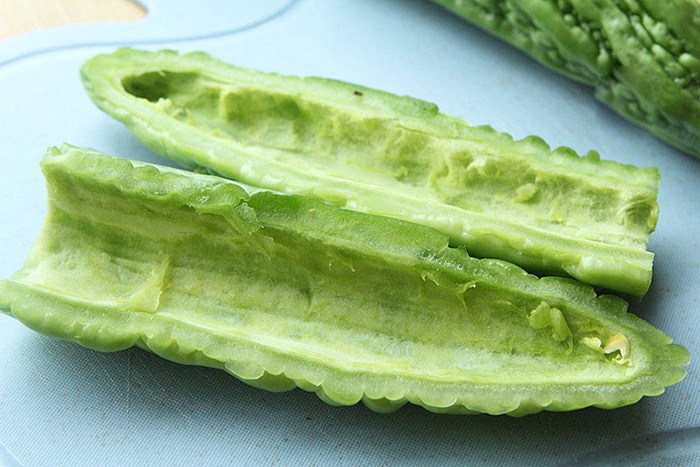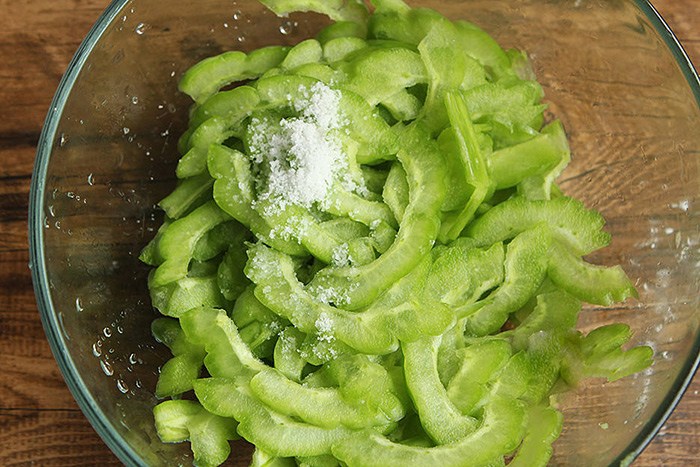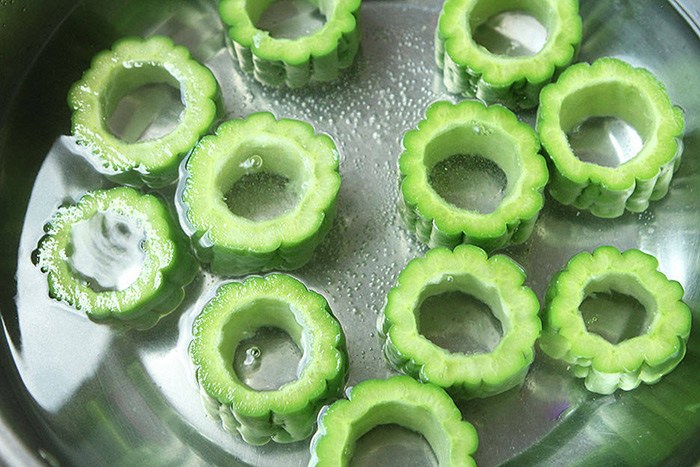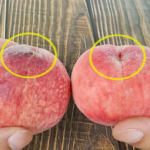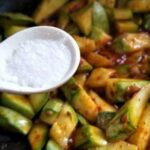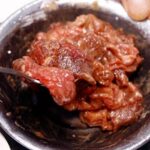Here are some tips to help you choose the best bitter melon.
Examine the Skin
Bitter melons have a textured surface with small bumps. Larger bumps that are spaced out indicate a softer, thicker, and less bitter melon. Smaller, denser bumps that are unevenly spaced suggest a thinner, harder, and more bitter fruit.
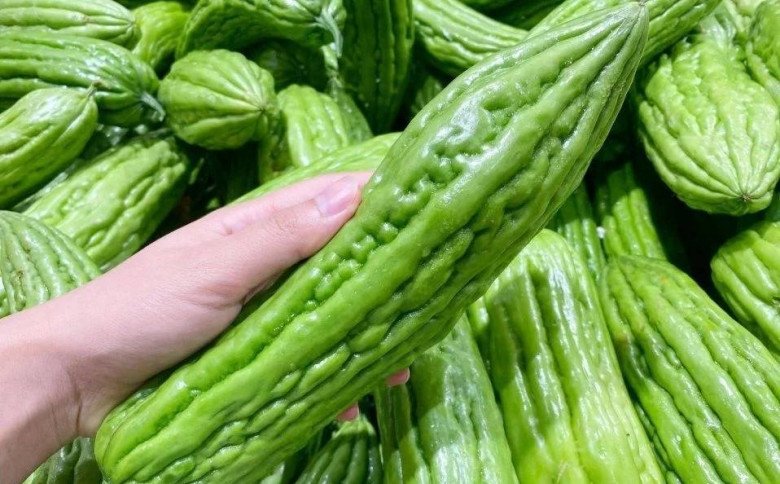
Consider the Shape
Bitter melons that resemble rice grains with pointed ends and relatively straight bodies tend to be tastier but also more bitter. Those with larger heads have a milder bitterness.
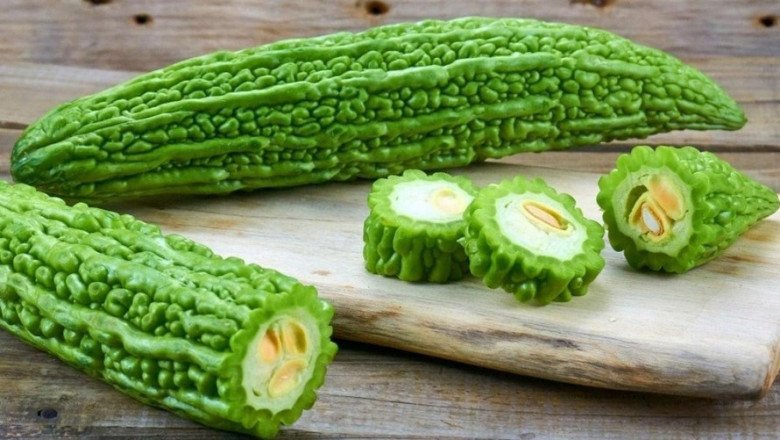
The rice grain-shaped bitter melons are delicious but tend to be more bitter.
Observe the Color
Fresh bitter melons have a bright emerald green color. If it turns yellowish, it’s overripe, and the flesh won’t be crisp. The lighter the color, the milder the bitterness, and the easier it is to eat. Conversely, the darker the bitter melon, the more intense its bitter taste.
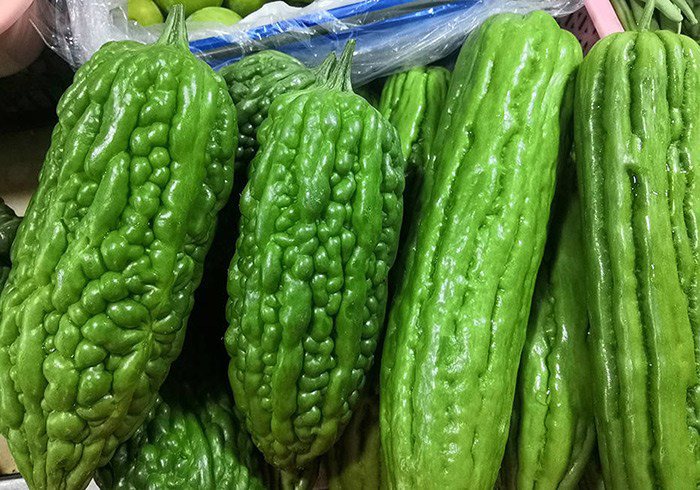
|
If you find the bitterness still unpalatable, try these tips to reduce it: Bitterness Reduction Tips Remove the White Membrane After washing the bitter melon, cut it in half, scoop out the seeds, and scrape away the white membrane inside. This part tends to concentrate the bitterness, so use a spoon to remove it effectively.
Use Salt Salt can also help reduce bitterness. Mix half a teaspoon of salt with sliced bitter melon, let it sit for 20 minutes, then rinse and drain the melon. This method significantly reduces bitterness.
Blanching
|
“The Secret to Perfect Beef Stir-Fry: A Dash of Magic”
The key to delicious, tender beef lies in the art of marination. A delicate balance of sugar and salt is essential to enhancing the flavor of the meat. But the question remains: which should come first, sugar or salt? The order of seasoning makes a significant difference, and getting it right is crucial to achieving that perfect taste sensation.

























